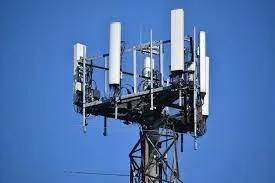In the chronicles of modern history, the evolution of technology has woven its intricate threads into every facet of our lives. Our universities, once realms of scholarly solitude, are now vibrant hubs where learning fuses seamlessly with the digital realm. Yet, amidst this progress, the challenge of feeble mobile connectivity persists like a pesky puzzle. Imagine navigating the sprawling corridors of knowledge, armed with a smartphone that transforms into an inconspicuous brick due to erratic signals. But fret not, for here we enter the knight in digital armour: the mobile booster for university campuses. In this discourse, we unravel the tale of how these technological allies revolutionise connectivity on university campuses.
Table of Contents
Background and Context
The annals of academia have borne witness to an explosion in the use of mobile devices, with smartphones becoming omnipresent companions in the pursuit of knowledge. However, these devices often find themselves ensnared in the labyrinthine architecture of campuses, struggling to connect with the outside world. Factors such as towering edifices, dense infrastructure, and geographical intricacies conspire to diminish our digital lifelines. This famine of signals not only affects communication but also withers the prospects of accessing online resources critical for the academic odyssey.
Understanding Mobile Boosters
But, the mobile booster – the harbinger of better signals! Imagine this as a translator between the language of your device and the elusive cellular signal. Consisting of an external antenna, amplifier, and internal antenna, this enigmatic contraption intercepts the faint cries of a distant tower, amplifies them into resounding proclamations, and disperses them evenly across the campus landscape. In simpler terms, it’s the celestial orchestra conductor that transforms weak notes into a harmonious symphony.
Benefits of Mobile Amplifiers for Universities
Consider a student desperately attempting to submit an assignment as the clock’s hand edges closer to midnight. With a mobile booster, her device receives the signal’s clarion call and delivers her work just in time. Not only does this enchanting device bestow faster data speeds, but it also grants voice call clarity that rivals a face-to-face conversation. Delve deeper, and we see how digital learning becomes fluid and unimpeded. Professors beam live lectures; students access e-libraries without a hitch. The campus turns into a hive of learning, buzzing with unfettered knowledge exchange.
Challenges and Considerations
Yet, as with any magician’s act, challenges persist behind the curtains. Regulations whisper cautionary tales, dictating careful adherence to the legal playbook. Incorrect installation akin to misplaced puzzle pieces can lead to signal clashes, counteracting the very magic the booster aims to conjure.
Practical Implementation
Before embarking on this technological escapade, universities must analyse their own connectivity conundrum. The colossal campus layout and the density of buildings determine the potency of the booster required. Choose wisely, and let the installation begin. Strategic placement of antennas and amplifiers, like puzzle pieces in a grand design, ensures a seamless symphony of signals.
Step-by-Step Installation of a Mobile Signal Amplifier on a University Campus from UCtel:
Survey the Campus:
Begin by conducting a thorough survey of the campus to identify areas with weak or no mobile signal coverage. Focus on key spots, such as classrooms, libraries, common areas, and student dormitories.
Select the Right Equipment:
Decide on a mobile signal amplifier that suits the size and layout of the campus. Consider factors like the number of floors, building materials, and the total coverage area required.
Install the External Antenna:
Find a location outside the building where the mobile signal is relatively strong. This could be a rooftop, the side of a building, or a pole. Mount the external antenna securely, ensuring it faces the direction of the nearest cell tower.
Connect the Amplifier:
Place the amplifier in a central location within the building, preferably near the areas with weak signal reception. Connect the external antenna to the amplifier using the provided cables.
Install the Internal Antenna:
Position the internal antenna in a spot where it can distribute the boosted signal evenly. Ideal locations include ceilings or walls near the areas where students and faculty need better signal strength.
Power Up and Test:
Plug in the amplifier to a power source. Turn it on and allow it to initialise. Test the signal strength using your mobile device in various areas within the building. Make adjustments if needed to ensure optimal signal distribution.
Fine-Tune the Installation:
If certain areas still have weak signals, you may need to adjust the placement of the internal antenna or the amplifier. Continue testing until you achieve consistent and strong signal coverage in the targeted areas.
Life Hacks:
- Signal Strength App:
Use a signal strength app on your mobile device during the installation process. This helps you identify areas with the weakest signals, making it easier to position the internal antenna effectively.
- Collaborate with IT:
Involve the university’s IT department in the installation. They can provide valuable insights into network architecture, existing equipment, and optimal placement for the mobile signal amplifier.
- Consider Future Expansion:
Plan for potential campus expansion or changes in building usage. Install the system with scalability in mind, allowing you to easily add more internal antennas or boosters as the campus grows.
By following these steps and using these life hacks, you’ll be well-equipped to enhance mobile signal coverage on a university campus, ensuring that students and faculty enjoy seamless connectivity for their academic and communication needs. How to choose the best mobile booster, read the guide from MobilityArena.
Case Studies
The University of Oxford installed cell phone boosters in several buildings on its campus, including the Bodleian Library, the Radcliffe Camera and the Sheldonian Theatre. With the incantation of mobile boosters, signal strength quadrupled, reaching even the farthest alcoves. Students, once isolated in signal dead zones, marvelled at the rejuvenated connectivity. Dr Yvonne Rogers, professor and director of UCLIC — an expert in educational technology, — she’s sure, that mobile boosters are more than technological tools; they are bridges connecting students to the world.
Conclusion and Practical Application
In the tapestry of our academic journey, mobile boosters stitch a narrative of empowerment. Their magic fuses learning and communication, fostering an environment where knowledge thrives unhindered. Practicality beckons universities to embrace these allies, etching an unwavering path toward amplified connectivity.
Trends and Future Glimpses
As technology evolves, so too will the saga of mobile boosters. Miniaturisation and integration may sculpt these devices into unobtrusive companions, seamlessly enhancing signals without fanfare. The pages of tomorrow’s textbooks might feature the stories of universities that birthed an era of unbreakable digital communion.
Life Hack
Ever felt stranded in a signal abyss while frantically searching for an online resource? Consider this your digital wand: a mobile booster for universities. With it, you summon signals like a sorcerer, and the world of knowledge bends to your whim.

